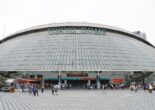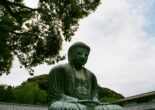In a city dependent on trains to connect itself, the train drivers are treated like royalty. But the machines they operate do not fall far behind. Japan lovingly takes care of and exposes its old trains - and explains their operation. Read on to find out more.
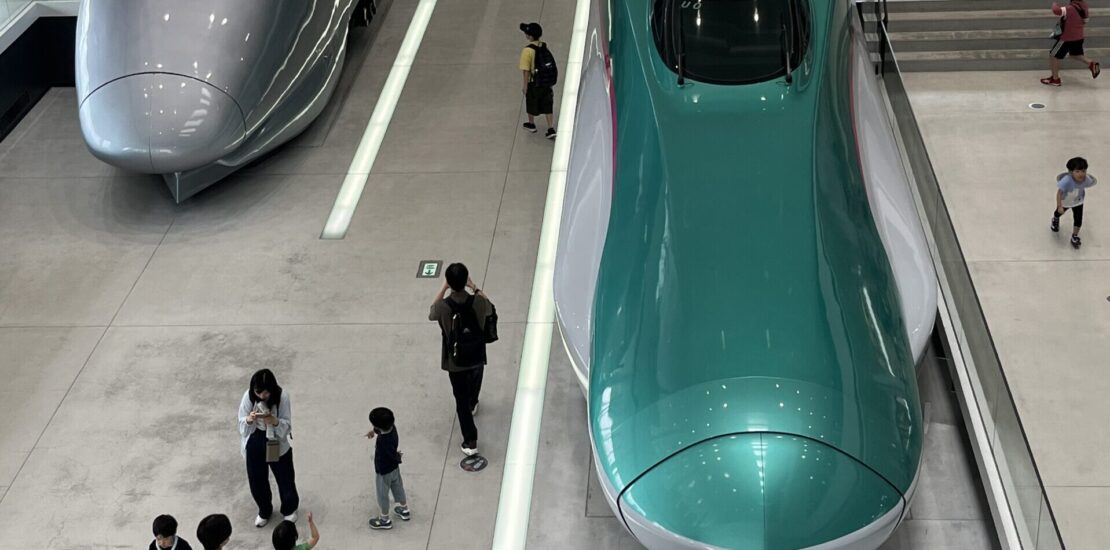
The Tokyo train museum is not in Tokyo — there would not be space for it. It is located in the old railway repair center in the town of Omiya, where the northern Shinkansen lines branch out towards Tohoku, Niigata, and Nagano. But it is quite a distance from the station. You can walk — or you can take the ”New Shuttle”, the unique Omiya local train on rubber wheels.
Better queues at the train museum than Disney
The train museum itself is a little walk away from the shuttle station, but once you get there, the well-organized lines are more thought through than those at Disneyland. And even when there are school classes coming to visit, the progress is relatively fast. Just try to be there a little before they open.
This museum is probably unique in that you can pay for the entrance tickets with your Suica card, like you would at any train station. But not the Pasmo card, which does basically the same thing but is issued by the subways and private train companies.
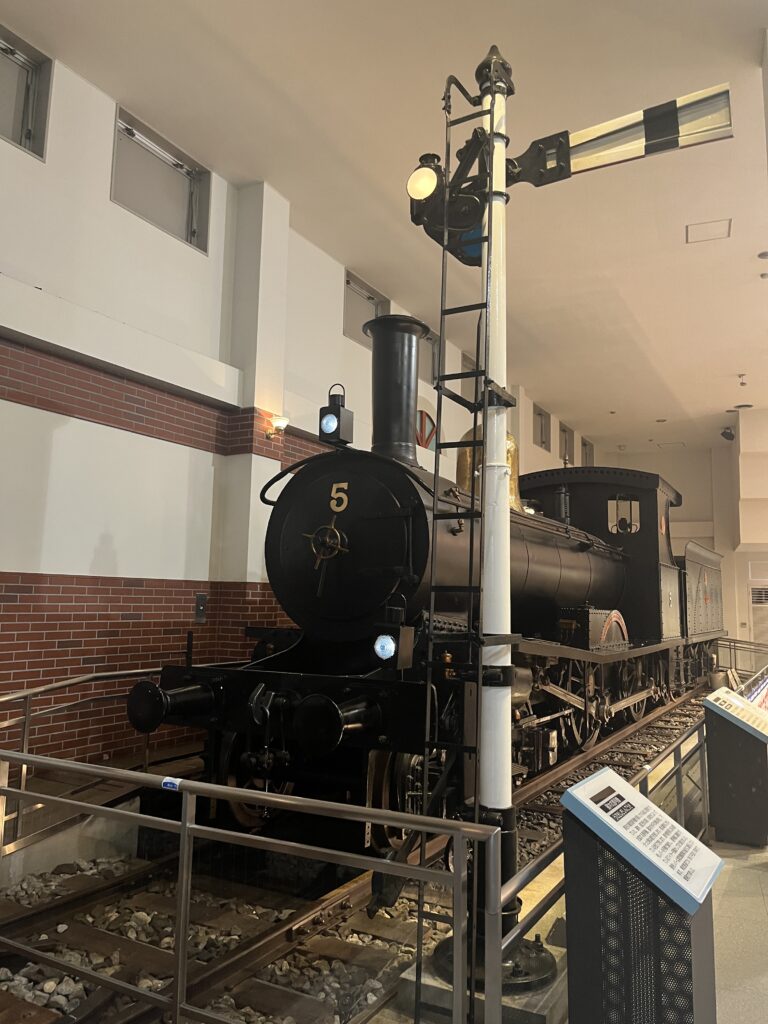
Because make no mistake, this is the JR train museum. Several of the private train companies have their own museums, but the only one in Tokyo proper is the Tobu museum, celebrating everything of that train company from the original locomotive to the Spacia X, the futuristic and supremely comfortable train that whisks tourists from Asakusa to Nikko. The museum is not located, as you might expect, near the Sky Tree (which is located on land owned by the Tobu group), but in a small, otherwise non-descript station in the northern suburbs.
Ignoring Other Train Companies
Generally, the JR museum ignores the other train lines. You will not see the Spacia X in the Omiya train museum, except as a model. There is no mention that the speed record for trains, which inspired the Shinkansen, was set by the Odakyu line with their first-generation tourist trains to Nikko. But if you are aware that this is a single-company museum, it is wonderful.
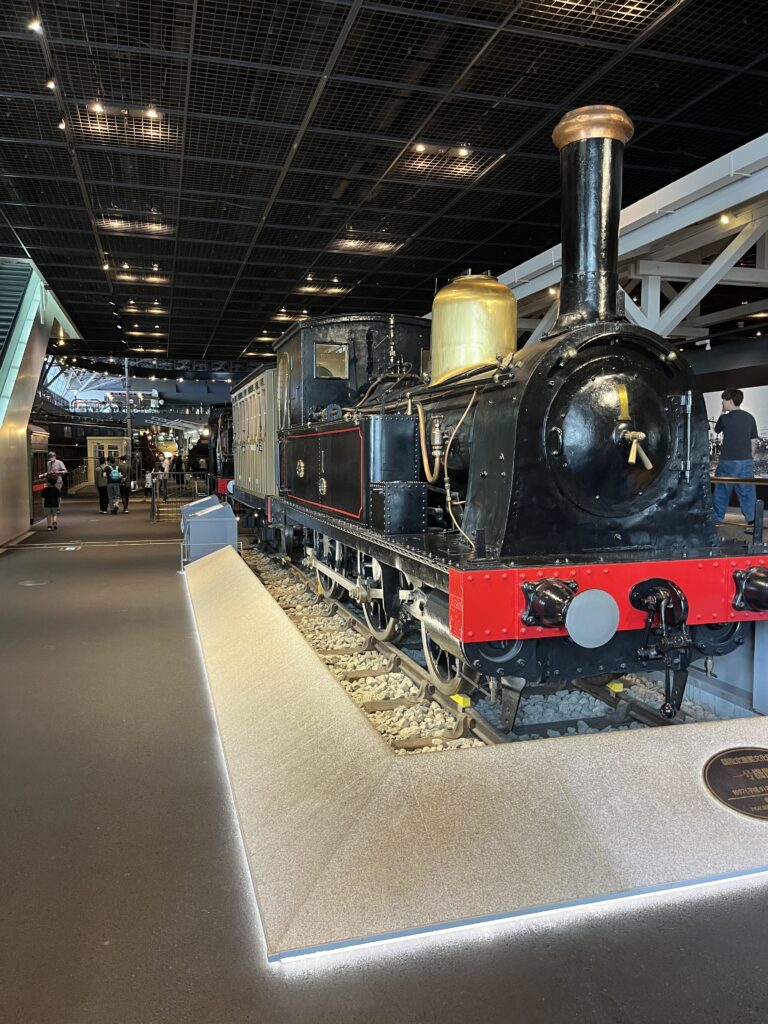
Because the train history in Japan stretches quite far back. As soon as Japan was opened up to the world during the Meiji restoration, trains started running between Tokyo and Yokohama. Go up to the third floor of the museum in the South wing, and there is an interactive recreation of what it was like when the train arrived at the Shimbashi station in the late 19th century. And the original ticket booth has been meticulously preserved. There is even an “ekiben” seller on display, and in the kiosk between the buildings, so you can buy a unique Hello Kitty Shinkansen bento. Otherwise, the Hello Kitty Shinkansen, as you probably know, only runs in Kyushu.
Ignoring peripheral train expansion
The expansion of the trains into what used to be peripheral areas (like Kyushu and Hokkaido) is not presented very well, if at all. The Tokyo Train Museum is a snapshot in time of the absolute glory days of Japanese train travel in the early 2000s.
And to be fair, it is a glorious compilation of the trains that made Japan. It covers the business express from the 1950s (look at the in-train phones!) to the original Shinkansen train (look at the water vending machines — and the toilets!). There are also more modern Shinkansen trains, representing the latest and greatest of Japanese design.
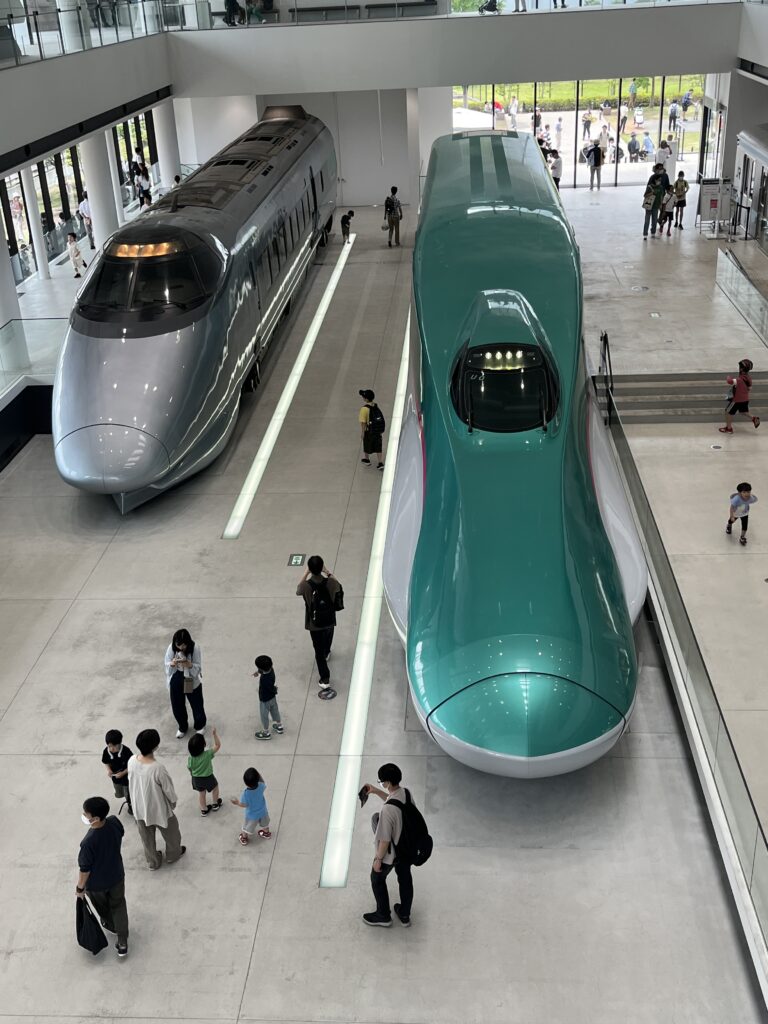
But there is no display showing the next generation trains, now finally under construction, which will run without wheels (magnetically levitated) between Osaka and Tokyo in less time than it takes to go through airport security control.
And there are plenty of steam trains. The museum collection stretches back to the first railways in Japan, with the original train that made those first runs between Yokohama and Shimbashi, and the incredibly luxurious Mt Fuji express (now replaced with something more up-to-date). The steam trains, to the train buff, are really where this museum shines (although the locomotives are as greasy as ever).
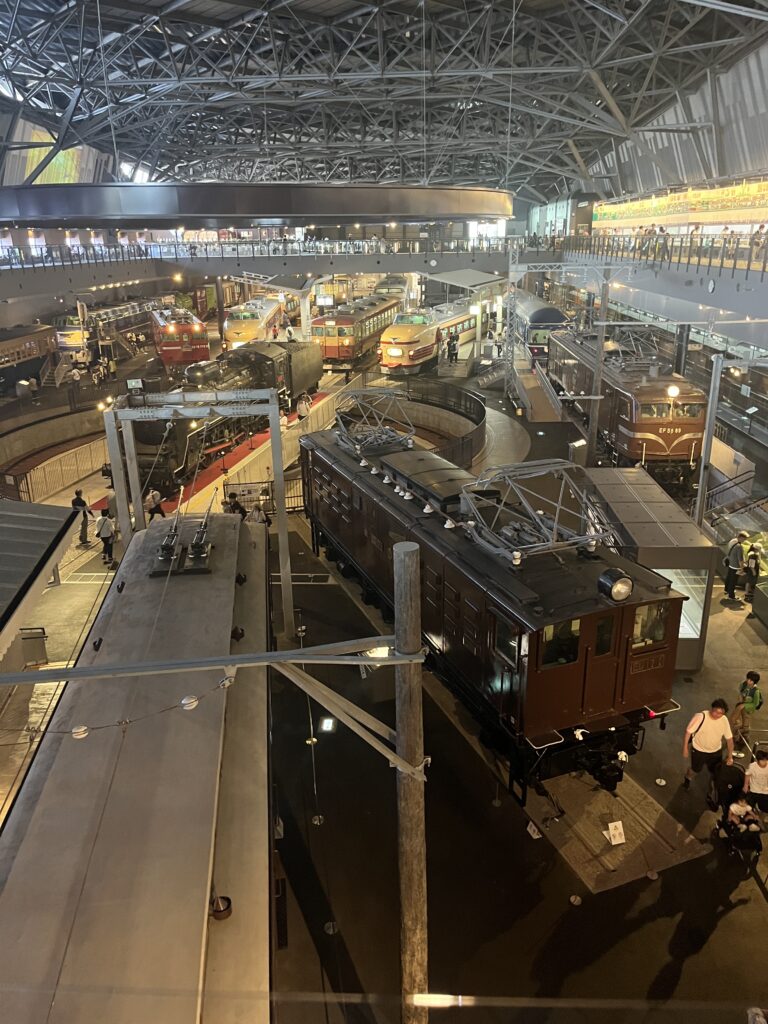
The Tokyo Train Museum does not cover all Japanese trains ever. That would be impossible, even when limiting yourself to the JR trains. The selection largely foregoes the commuter trains, especially in cities other than Tokyo. But it does give an interesting overview of the intercity trains. And the Taisho era second-class car interior will send shivers down the spines of any Kimetsu no Yaiba fan.
Interactive steam train simulator
This is, however, much more than a static display of machines. There are interactive displays scattered throughout the vast machine hall, although you have to have a staff member accompany you to test the steam train simulator (keeping the pressure without making the boiler explode is much harder than you may think!). Trying to run a train in one of the pocket-sized model railways is interesting, as is looking through the Shinkansen binoculars to see what actually goes on in front of the train. However, all explanations, signs, and interactive experiences are in Japanese. There is an English pamphlet, and they do try to post messages in English, but the Japaneseness of the exhibitions is just overwhelming. And the English of the staff is more limited than you would expect in an internationally renowned museum.
Drive Shinkansen yourself
The ultimate interactive displays are in the South wing, and even though you have to book in advance to use the Shinkansen driving simulator, the ordinary train simulators just require you to line up. And go back to the end of the line once you have completed the run. If you (or even better, your children) can speak Japanese, there is even a “junior train driver school”, where you can take classes that are very similar to what the real train conductors’ training is like. This is, however, also only available by booking.
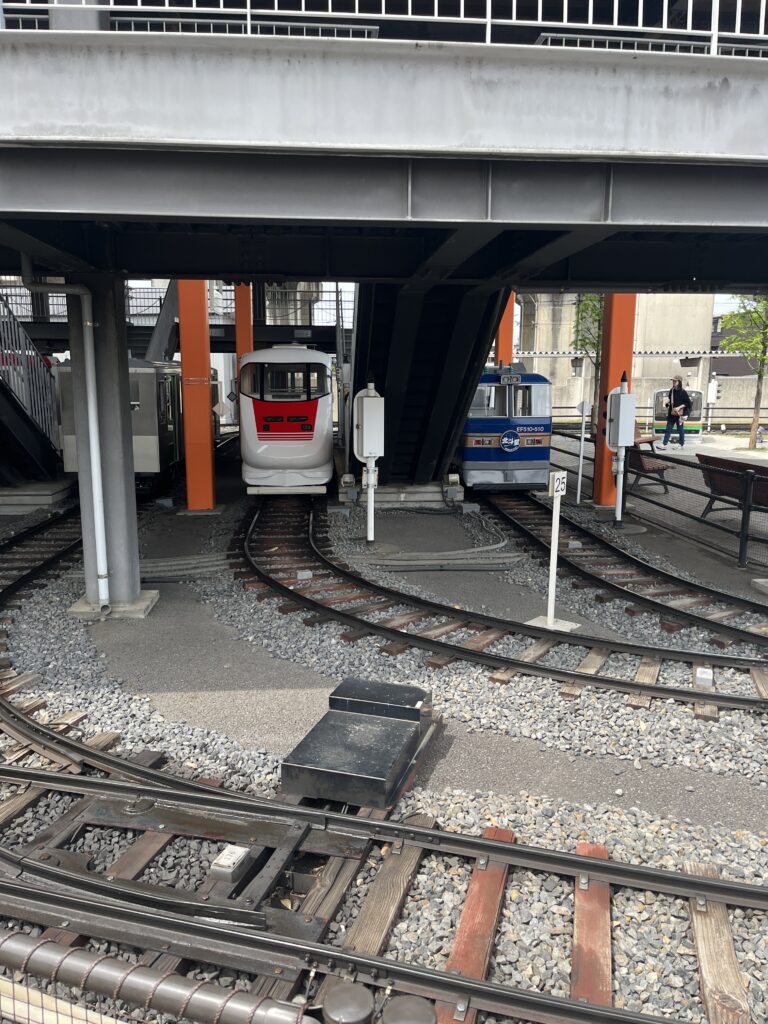
They can not start the steam engines in the machine hall, so the closest you get is when the huge steam locomotive is shifted on a turnstile twice a day. But on the other hand, this is the only train museum where you can see the Shinkansen trains whizz by only a couple of meters from the windows of the resting area — a much more magnificent experience than going out in the roof garden. The timetable is, helpfully, posted next to the windows with explanations of which train types you will see.
Transforming Shinkansen trains
And this would not be a Japanese museum without a character. Although in this case, the characters are not as cute as you could expect, but Transformer-like robots, fighting evil on wheels. The Shinkalion set of characters has its own movie — and it is on display in the 3D movie theatre on the 3rd floor of the North Wing. Worth the experience, even if you do not follow the action, just to get to sit down after a hard day’s walking through the exhibits.
Stay tuned for more exciting content like this! Follow us on our social media platforms and check out our blog regularly to stay updated on the latest news, trends, and insider stories from Japan. Don’t miss out on future updates — sign up for our newsletter for exclusive content delivered straight to your inbox!
Related Articles
Warning: Undefined array key "sfsi_threadsIcon_order" in /home/veremosglobal/tokyoroomfinder.com/public_html/blog/wp-content/plugins/ultimate-social-media-icons/libs/controllers/sfsi_frontpopUp.php on line 165
Warning: Undefined array key "sfsi_blueskyIcon_order" in /home/veremosglobal/tokyoroomfinder.com/public_html/blog/wp-content/plugins/ultimate-social-media-icons/libs/controllers/sfsi_frontpopUp.php on line 170
Warning: Undefined array key "sfsi_bluesky_display" in /home/veremosglobal/tokyoroomfinder.com/public_html/blog/wp-content/plugins/ultimate-social-media-icons/libs/controllers/sfsi_frontpopUp.php on line 266


